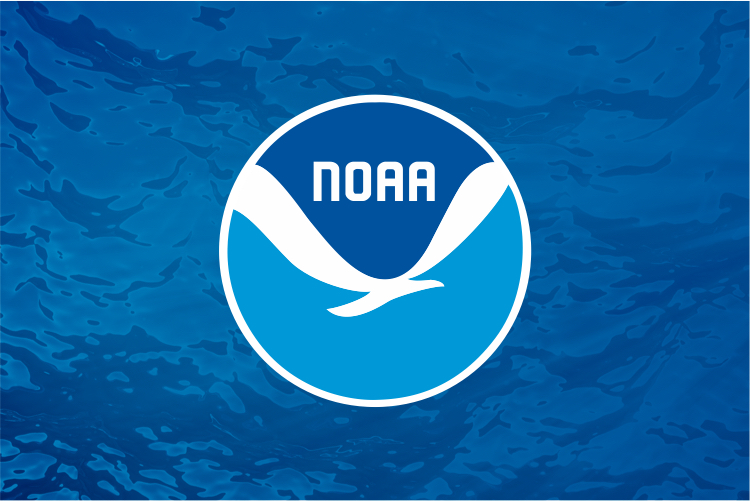Sunflower Sea Star
Pycnopodia helianthoides
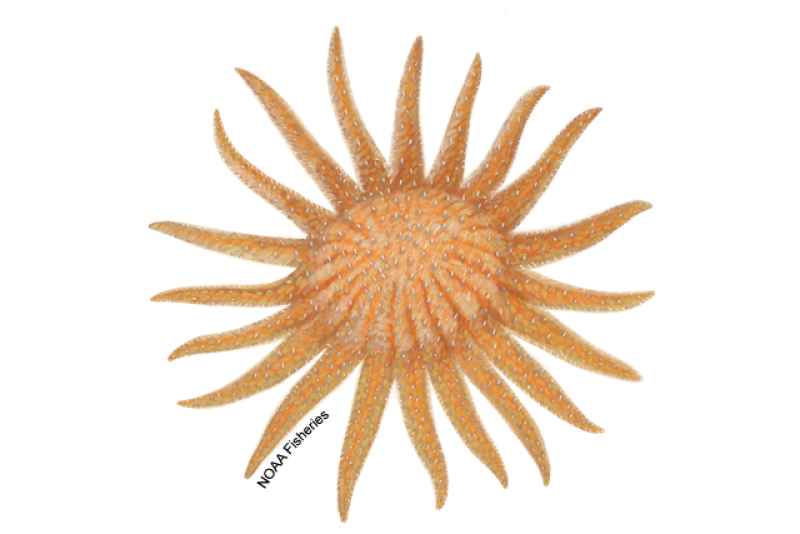
Protected Status
Quick Facts
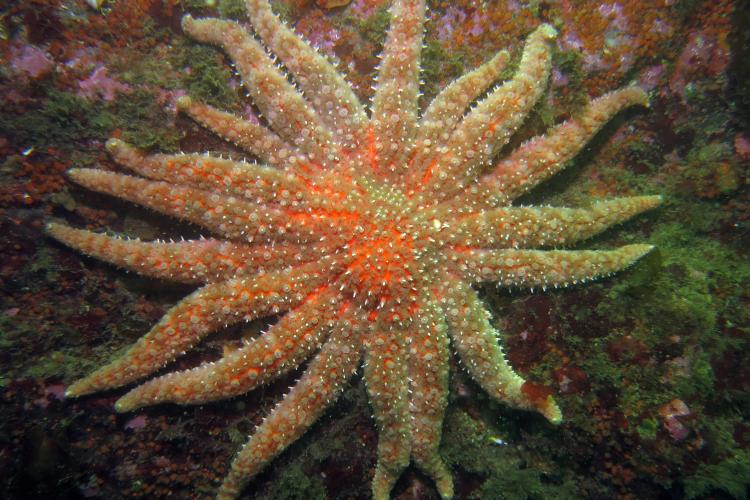
About the Species

The sunflower sea star occurs throughout intertidal and subtidal coastal waters of the Northeast Pacific Ocean from the Aleutian Islands, Alaska, to at least northern Baja California, Mexico. They are found to a depth of at least 435 meters on various substrate types, from rocky kelp forests to sand and mud flats.
Sunflower sea stars are broadcast spawners that require close proximity to mates for successful fertilization.
There is no single, systematically collected data set that provides population size or long-term trend data for the sunflower sea star throughout its range. However, from 2013-17, an outbreak of sea star wasting syndrome contributed to precipitous population decline, with impacts largely progressing sequentially from south to north. Disease, specifically sea star wasting syndrome, is the primary threat to the species. The influence of environmental stressors, including those associated with directional shifts in habitat traits over the long term, on disease risk are unresolved and are a major research focus.
Where They Live
Sunflower sea stars can be found from the northeast Pacific Ocean in Alaska to at least Baja California, Mexico. This sea star is found both along outer coasts and inside waters, and prefers temperate waters.
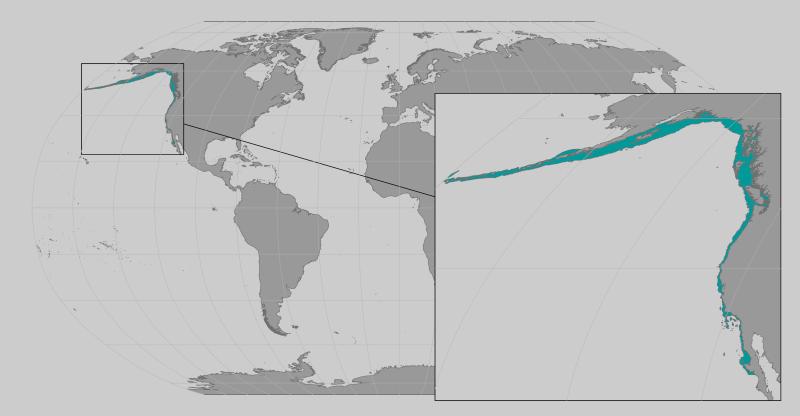 World map providing approximate representation of the sunflower sea star range
World map providing approximate representation of the sunflower sea star range
Scientific Classification
| Kingdom | Animalia | Phylum | Echinodermata | Class | Asteroidea | Order | Forcipulatida | Family | Asteriidae | Genus | Pycnopodia | Species | helianthoides |
|---|
Last updated by NOAA Fisheries on 09/11/2025
Featured News
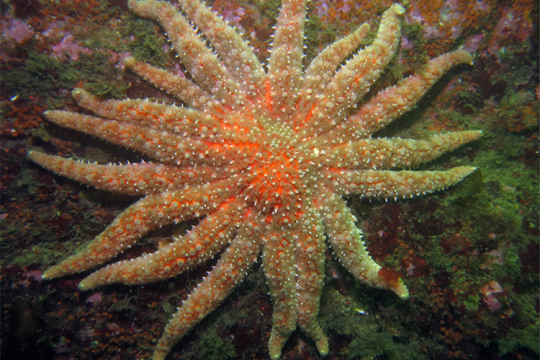 A sunflower sea star. Credit: Gullekson/WDFW
A sunflower sea star. Credit: Gullekson/WDFW
Infographic: Sunflower Sea Stars are Important for Maintaining a Healthy Marine Ecosystem
 Sunflower sea star. Photo: Janna Nichols
Sunflower sea star. Photo: Janna Nichols
NOAA Fisheries Proposes Listing Sunflower Sea Star as Threatened under Endangered Species Act
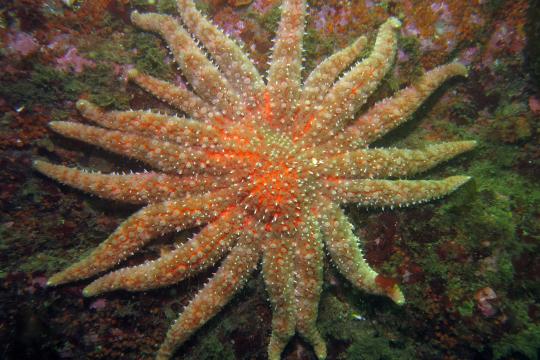 The sunflower sea star, Pycnopodia helianthoides, is native to the West Coast. Credit: NOAA Fisheries
The sunflower sea star, Pycnopodia helianthoides, is native to the West Coast. Credit: NOAA Fisheries
NOAA Fisheries Weighs Protection for Sunflower Sea Star Native to West Coast
Management Overview
In 2021, NOAA Fisheries was petitioned to list the sunflower sea star (Pycnopodia helianthoides) as a threatened or endangered species under the Endangered Species Act. NOAA Fisheries has since completed a status review of the sunflower sea star (Pycnopodia helianthoides) and proposed to list the species as threatened throughout its range under the Endangered Species Act.
Key Actions and Documents
Last updated by NOAA Fisheries on 09/11/2025
Documents
Biological Opinion (NMFS), United States Army Corps of Engineers, Reinitiation of the Scow Bay Haulout Ramp and Breakwater Project, Petersburg, Alaska
This opinion considers the effects of improvement activities to the Scow Bay facilities in…
Biological Opinion NMFS Office of Protected Resources, Permits and Conservation Division, Whittier Small Boat Harbor, Whittier, Alaska
This opinion considers the effects of in-water pile driving of steel piles and the removal and…
Biological Opinion NMFS Office of Protected Resources, Permits and Conservation Division, Ketchikan Berth III Moorings, Ketchikan, Alaska
This opinion considers the effects of a proposed action by the City of Ketchikan (COK) to install…
Biological Opinion Federal Transit Administration, Angoon Ferry Terminal, Angoon, Alaska
This opinion considers the effects of in-water pile driving of steel piles and the removal of…
Last updated by NOAA Fisheries on 09/11/2025
